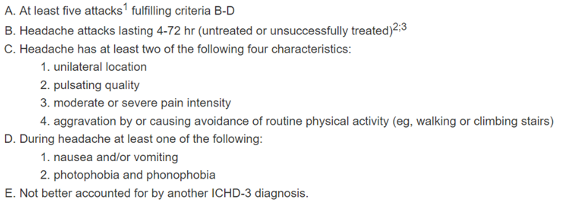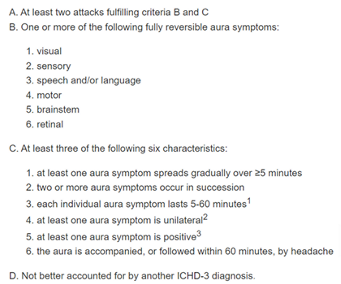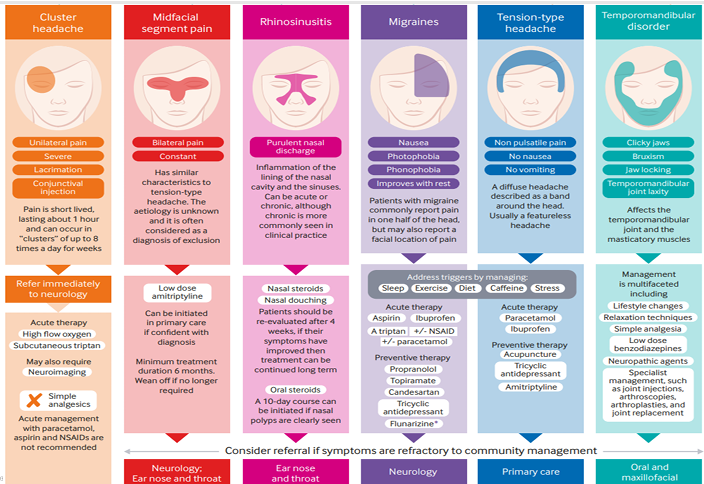Musculoskeletal Upper Limb
1/46
There's no tags or description
Looks like no tags are added yet.
Name | Mastery | Learn | Test | Matching | Spaced |
|---|
No study sessions yet.
47 Terms
Craniovertebral Instability
“Excessive movement at C1-C2 vertebrae as a result of bony or ligamentous abnormality”
Symptoms: Neck pain, wry neck posture, headache, myelopathy bowel/bladder dysfunction, ataxia
Diagnosis: Sharp-Purer test, neurological exam, Imaging, UMNL signs
Risk Factors: acute trauma, degeneration, congenital conditions
Cervical Arterial Dissection (CAD)
“Tear in the wall of the vertebral artery which may result in a cerebrovascular accident/stroke”
Symptoms: acute onset neck pain, headache,
Diagnosis: Horners syndrome (constricted pupils, droopy eyelids, inability to sweat), neuro exam
Treatment: refer to ED immediately!
Risk Factors: minor trauma, infection, genetics, younger population
Vertebro-basilar Insufficiency (VBI)
“Decrease blood flow to the posterior portion of the brain via the basilar artery”
Symptoms: 5 D’s and 3 N’s, lightheadedness, blurriness of vision, vomiting, P&N, pallor
Diagnosis: VBI positional tests, Positive test → dizziness, nystagmus, unwell feeling
Treatment: refer to ED immediately!
Risk Factors: older patients, chronic neck pain/stiffness, atherosclerosis, spondylolysis, trauma
Cervical Myelopathy
“Compression to the spinal cord from trauma or stenosis”
Symptoms: bilateral neuro symptoms, weakness, bladder/bowel dysfunction, saddle anesthesia.
Treatment: ED or specialist, diagnostic imaging, surgery
Risk Factors: older age
Whiplash Syndrome (Whiplash Associated Disorders= WAD)
“Acceleration-deceleration injuries to cervical spine“
Symptoms: neck pain, headache, decrease neck mobility, arm pain, 5Ds/3Ns,
Diagnosis: history taking, MOI in detail, palpation, ROM, neuro exam
Treatment: stay active, pharmacology, manual therapy
Acute Wry Neck (Zygapophyseal/Discogenic)
“Sudden onset of sharp neck pain with protective deformity and limitation of movement”
Symptoms of Zygopophyseal:
young children/adults, Upper Cx, locking of C0-C2, limited ROM, sudden movement = sharp pain, trauma
Treatment
joint mobilization, AROM/PROM, posture, traction
Symptoms of Discogenic:
gradual onset, older generation, lower Cx, refer to scapular region
Treatment:
gentle traction, heat, posture, collar, soft tissue mobilisations
Risk Factors: sudden quick movement or waking from sleep
Non-specific Cervical Spine Pain - Spondylosis
“degeneration of the spine”
Symptoms: neck pain, stiff neck, headaches, radiculopathy
Diagnosis: patient Hx, imaging
Treatment: soft tissue, strengthening, medication, ROM, surgery
Risk Factors: age
Disc Prolapse
Symptoms: neck pain, painful AROM/PROM, arm pain
Diagnosis: imaging, patient Hx
Treatment:
Risk Factors: acute trauma, insidious→ degeneration, 51-60yrs, females
Cervical Radiculopathy
Symptoms: neck pain, arm pain, neurological symptoms, tingling/P&N, reflex changes
Diagnosis: patient Hx, Neuro exam, diagnostic imaging, Spurlings test
Treatment: traction, immobilization, soft tissue, manual therapy, steroids, ROM
“Nerve root compression”
Stinger and Burner Syndrome
“brachial plexus traction injury → pulling arm and neck away”
Symptoms: radicular type burning, shooting, stinging, numbness, weakness
Diagnosis: neuro exam, AROM/PROM, MMT
Treatment: treat the deficits, stretching, postural restraining, strength training
Risk Factors: rugby league, contact sports
What are the 5D’s and 3N’s for VBI symptoms?
Dizziness (vertigo or lightheadedness)
Diplopia (double vision)
Dysarthria (slurred or impaired speech)
Dysphagia (difficulty swallowing)
Drop attacks (sudden loss of postural control without loss of consciousness)
Nausea (or vomiting)
Nystagmus (involuntary eye movements)
Numbness (especially facial or perioral paresthesia)
Migraine without Aura
Sudden onset - recurrent headache disorder lasting 4-72 hours
Management: Sleep, hydrate, drugs, exercise, diet, lifestyle

Migraine with Aura
Buildup for the migraine - recurrent attacks, symptoms build up followed by headache/migraine
Management: Sleep, hydrate, drugs, exercise, diet, lifestyle

Tension-type Headache - Episodic and Chronic
Symptoms: bilateral, pressing/tightening, mild-moderate, not agg by physical activity
Cause: stress, poor posture, muscular, nutrition, concentration, environmental
Management: Pharmacology, NSIADS< physical activity, CBT, treatment of the cranio-cervical-mandibular region

Trigeminal Autonomic Cephalagias - Cluster or Episodic
Symptoms: intense one-sided pain centered by the eye/temple
Ipsilateral pain, lacrimation, rhinorrhea, nasal congestion, sweating, restlessness, miosis
Lasts 15-180 minutes
Management: Triptans, oxygen, pharmacology, physiotherapy, electrostimulation

Primary Cough Headache
Cause: coughing or other Valsalva/straining maneuver

Primary Exercise Headache
Cause: exercise in the absence of any intercranial disorder, hot weather, short duration

HA due to Trauma - Persistent
Symptoms: Dizziness, fatigue, reduced concentration, memory loss, insomnia, anxiety, personality changes
Time frame: HA more than 3 months caused by trauma to the head

HA due to Trauma - Acute
Symptoms: Dizziness, fatigue, reduced concentration, memory loss, insomnia, anxiety, personality changes
Time Frame: less than 3 months caused by trauma to head

Acute HA due to Whiplash
Symptoms: Dizziness, fatigue, reduced concentration, memory loss, insomnia, anxiety, personality changes
Time Frame: Less than 3 months due to whiplash

Persistent HA due to Whiplash
Symptoms: Dizziness, fatigue, reduced concentration, memory loss, insomnia, anxiety, personality changes
Time Frame: HA more than 3 months due to whiplash

Cervicogenic Headache
“C1-C3 nerve roots converge in same brain region”
Symptoms: Unilateral headache, ipsilateral neck/shoulder/arm pain, migraine-like features
Physical Signs: Anesthetic blockades (gold standard), reduced cervical AROM/PROM, dysfunction, impaired muscle function
Treatment: sleep, drugs, exercise, posture, psych, mobilization

Headache attributed to TMJ disorder
“Referral between Cervical and TMJ - anatomical, neurophysiological, biomechanical, function
Symptoms: Muscle pain, headaches, joint related issues

Headache Differentiation

Myalgia (TMJ)
Muscle as the primary source of pain and/or dysfunction
Symptoms: pain in the jaw, temple, in ear or front of ear AND pain modified with jaw movement, function or parafunction, headaches, difficult to localise, dull pressure, multifactorial
Diagnosis: confirmation of pain in temporalis or masseter on palpation, maximal unassisted/assisted opening
Risk Factor: dental occlusion, molar removals, genetics, depression
Disc Displacements - Ant. displacement without reduction (ADDwoR)
“Closed lock” limited opening + absence of click
traumatic onset, sudden crack, clicking
painful limited protrusion + deflection to affected side
restricted lateral deviation to contralateral side
Disc Displacement - Ant. displacement with reduction (ADDwR)
click, no lock
deviation to unaffected side during early opening
may achieve full rom
Disc Displacement - Post. disc displacement without reduction
“Open lock” “subluxation”
much less common
Non-specific Thoracic Spine Pain (x3) (mechanical)
Conditions: joint dysfunction, paraspinal muscle sprain. posture related, structural pathologies
Facet Joint:
unilateral/post pain, acute onset, dull pain at rest
reduced AROM, hypomibility of involved facet, muscle spasm guarding
management: manual therapy, gentle ROM
IVD:
central/post/ant pain felt through chest, postural loading, dull and diffuse pain
limited AROM, hypomobility of involved segments
management: manual therapy, gentle ROM, exercises
CVJ/CTJ:
unilateral pain along rib line, conjunction with facet joint injury, respiratory signs,
limited trunk motion, multiple segments involved
Management: manual therapy, gentle ROM
Specific Thoracic Spine Pain - Scheuremann’s Disease (Kyphosis)
Type 1: Thoracic, produces more deformity than pain
Type 2: more pain than deformity in thoracolumbar
Presentation on Imaging: irregularity of end plates, Schmorls nodes, wedge-shaped VB’s, hyperkyphosis
Diagnosis: after long posture, tight hamstrings, respiratory limitation, curvatures,
Risk Factors: adolescents, males, taller/skeletally mature, 13-16 yrs
Management: Education, braces, Tx-Lx-pelvic-hip mobility
Conditions: rib fracture, central canal stenosis, disc prolapse, syndromes
Serious Pathologies of the Thoracic Spine (x4) (PVoPT)
Pyrogenic Spinal Infections
septic discitis, vertebral osteomyelitis, epidural abscess, occurs more in males over 50
Vertebral Osteomyelitis (an infection)
triad of pain, fever and local tenderness, paraspinal abcesses, jaggered N plates
Risks involve malnutrition, IV use, infection, renal failure, spinal surgery
Pyrogenic Discitis
can occur with vertebral osteomyelitis, antibiotics can fix, surgical intervention
Tumors
primary, benign or metastatic, (metastatic spinal disease common)
Specific Thoracic Spine Pain - Scoliosis
Type: Structural: idiopathic (known cause)
usually painless, respiratory issues can be present, lateral curvature
Managment: exercise, bracing, operation
Type: Non-structural (adaptive/maladaptive posture)
leg length differences, hip add/abd deformity, poor lumbar-hip control, muscle asymmetry
Risk Factors: females
Specific Thoracic Spine Pain - Spondyloarthropathies
Inflammatory spinal pain with ONE or more of:
Positive family history in first- or second-degree relatives of patients with ankylosing spondylitis, psoriatic arthropathy, acute iritis, reactive arthritis or IBD.
Psoriasis
Inflammatory bowel disease
Alternating buttock pain
Enthesitis
Acute diarrhoea
Urethritis
Sacro-iliitis: bilateral grade 2-4 changes or unilateral 3-4 changes.
Symptoms: LBP, IT aching, sharp, worse after activity, AM stiffness, limited chest wall excursion
Management: aerobic exercises, manual therapy
Risk Factors: Males, 16-25 years
Specific Thoracic Spine Pain - Central Canal Stenosis
Signs: intermittent aching and clumsiness of both legs, worse with walking, neurogenic intermittent claudication, ataxia, incoordination of LL, cauda equina symptoms, “shopping trolley” sign
Risk factors: older age
Specific Thoracic Spine Pain - IVD protrusion -/+ radiculopathy
Symptoms: localized back pain, radiates around chest wall, myelopathy, +/- cord compression, bladder/bowel changes → UMN
Management: Physio, education, activity, manual therapy, postural control, trunk strengthening
Risk Factors: disc degeneration, disc calcification, below T7
Specific Thoracic Spine Pain - Fractures (x3)
Vertebral body compression #
trauma, high compression
Rib #
blunt trauma (pneumo/hemothorax), ribs 5-10 most common, symptomatic, >3-week recovery
Rib stress injury
shear forces created by muscle contraction, activity related chest wall pain, confirmed by MRI or bone scan
Specific Thoracic Spine Pain - T4 Syndrome
Upper extremity paresthesia and pain +/- symptoms into the neck and/or head
Autonomic nervous system role → dysfunctions expressed over lower Cx spine and down the UL
Hypomobility upper Tx region (esp. T4) common = responds to joint mobilizations
Specific Thoracic Spine Pain - Thoracic Outlet Syndrome
Mechanical compression/entrapment of the cords of the brachial plexus +/ subclavian artery + vein
Symptoms: hand weakness, swelling, atrophy, C8/T1 radiculopathy
Management: Roo’s test, Adson’s maneuver, costoclavicular maneuverer
Specific Thoracic Spine Pain - Costochondritis and Tietze Syndrome
Costochondritis:
systemic cause, no local swelling, multi-joint, usually chronic, swelling of costochondral joint
Tietze Syndrome
swelling of costochondral junction, idiopathic, local pain and swelling, may occur after chronic coughing, vomiting, viral or trauma
Specific Thoracic Spine Pain - Ankylosing Spondylitis
Symptoms: Hereditary link to HLA-B27, Insidious onset of hip/buttock to LBP, IT aching +/- sharp, Worse after activity, AM stiffness, Limited chest wall excursion, Global limitation of trunk/Tx ROM •
Radiographic changes– Sacroiliitis; bamboo spine
Management:
Risk factors: 16-25 years, males
What is Shoulder Impingement?
Influenced by thoracic posture and mobility
External (Subacromial)- mechanical encroachment of the soft tissue in the subacromial space between the humeral head and subacromial space, occurs mid-range (60-120 deg “painful arc”)
Internal (post/sup)- Encroachment of the RC tendons in the glenohumeral joint
Primary cause- Structural narrowing of subacromial space (arthritis, AC enlargement, soft-tissue swelling)
Secondary cause- functional problems in shoulder positions (RC weakness, instability)
A cluster of symptoms, NOT a pathology
Shoulder Impingement: Rotator Cuff Related Shoulder Pain (SCRSP)
Supra > Infra > Subscap
Tears: can’t sleep on affected side, pain/weakness with RC testing,
Tendinopathy: multifactorial etiology, chronic pain, pain free past 90deg elevation
Diagnosis:
Tears: MRI, Ultrasound
Tendinopathy: MRI arthorgram
Treatment:
Tears: Conservative treatment surgery, strength, balance/control
Pain relief, RC rehab
Risk Factors: athletes, overhead workers, traumatic event
Shoulder Impingement: Scapular Dyskinesia
Clinical Manifestations: reduced scap upward rotation, post tilt, ER, increased clavicle elevation, decreased strength, Pec minor/post capsule reduced length
Treatment: pain relief, flexibility, muscle training, thoracic spine and STJ mobility, muscle control
Shoulder Impingement: Shoulder Instability - TUBS
(Traumatic Unidirectional (+/‐ Bankart lesion) instability +/‐ Surgery (TUBS)
Anterior dislocation
forced shoulder abd + ER, usually a traumatic injury
Recurrent dislocation
chronic shoulder instability
Posterior dislocation
Fall on outstretched hand (FOOSH)
pain, tightening, clicking, decreased ER
Treatment: Scapular rehab, RC control/strengthening, open/closed chain exercises, kinetic chain exercises
Shoulder Impingement: Shoulder Instability - AIOS
(Acquired sport‐specific instability (AIOS))
Symptoms: laxity of ant capsule caused by excessive anterior translation of humeral head
Clinical Manifestations: excessive PROM ER vs IR, recurrent shoulder pain during overhead activity
Diagnosis: “dead arm syndrome,” apprehension/relocation tests positive
Treatment: Scapular rehab, RC control/strengthening, open/closed chain exercises, posterior shoulder stretching, kinetic chain exercises
Risk Factors: overhead athletes, laxity
Shoulder Impingement: Shoulder Instability - AMBRI
(Atraumatic multidirectional instability with bilateral laxity (AMBRI)
Symptoms: pain, repeated subluxation or full dislocation
Clinical Manifestations: dynamic/muscle patterning instability, congenital joint hyperlaxity, repetitive overuse,
Diagnosis: laxity tests positive, altered muscle activation
Treatment: therapeutic exercises ongoing, surgery may be needed, closed/open chain exercises,
Risk Factors: 2-3 atraumatic instabilities
Shoulder Impingement: Biceps-related
Symptoms: All present with shoulder pain
Risk factors: Repetitive overhead activities
Inflammatory/degenerative/partial tears long thhead of biceps brachii (LHBB)
Instability of the bicep tendon in the bicipital groove
Superio Labrum Anterior to Posterior (SLAP)
^ Stable/unstable - 4 SLAP sub-types
Intact, fraying, degeneration
Detachment Superior Labrum and LHB
SL detached, LHB intact
Tear SL and LHB, displaced in the GHJ
Caused By: carrying, dropping, throwing
Symptoms: popping, catching, grinding
Treatment: Conservative treatment for most clients, surgery for traumatic injuries